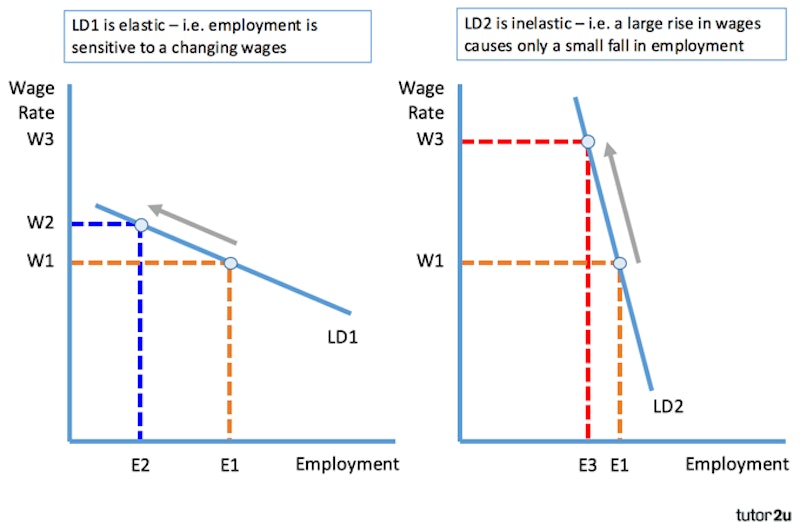Topic Videos
Elasticity of Labour Demand (Labour Markets)
- Level:
- AS, A-Level, IB
- Board:
- AQA, Edexcel, OCR, IB, Eduqas, WJEC
Last updated 21 Mar 2021
Elasticity of labour demand measures the responsiveness of demand when there is a change in the wage rate. This short topic video goes through the key factors affecting the elasticity of demand for labour.
Factors affecting the wage elasticity of demand for labour
- Labour costs as a % of total costs: When labour expenses are a high % of total costs, then labour demand is more wage elastic.
- Ease and cost of factor substitution: Labour demand is more elastic when a firm can substitute easily and cheaply between labour & capital inputs.
- Price elasticity of demand for the final product: This determines whether a firm can pass on higher labour costs to consumers in higher prices. If demand is inelastic, higher costs can be passed on.
- Time period – in the long run it is easier for firms to switch factor inputs e.g. bring more capital in perhaps replacing labour

You might also like

Automation a factor behind falling real wages for millions
19th October 2014
Minimum Wages - Evaluation (Labour Markets)
Topic Videos

Do Uber drivers earn less than minimum wage?
9th June 2016
The Labour Market for Chefs - Supply Drying Up
21st March 2018
Update on the Gender Pay Gap
30th March 2018
Low Pay in the Labour Market
Study Notes

Supermarkets Battle for Staff
27th February 2024
